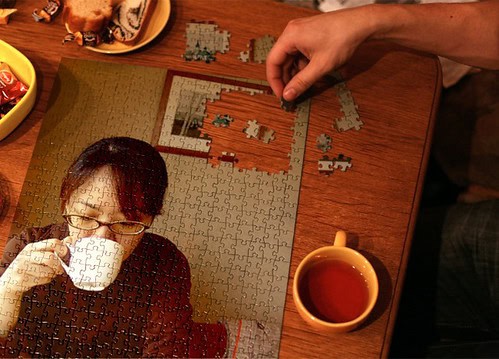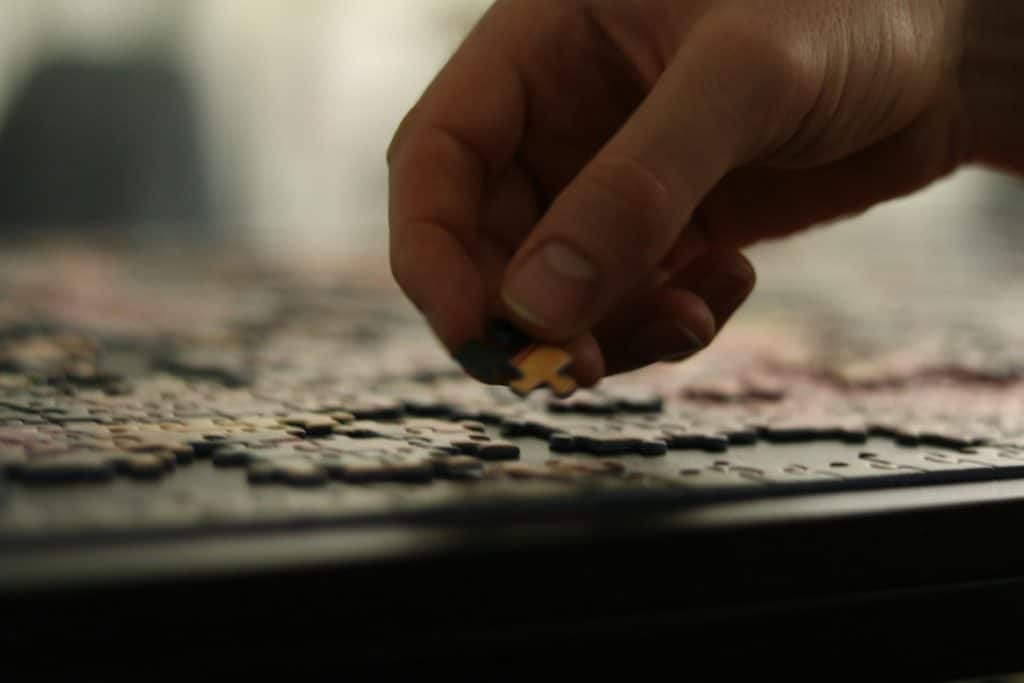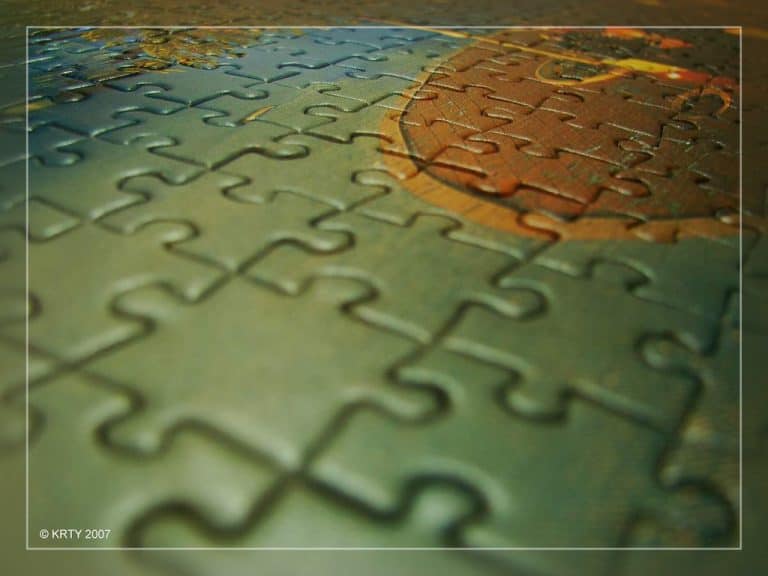Imagine transforming your favorite moments into a hands-on experience with jigsaw puzzle photography. This unique blend of hobbies turns your cherished photos into puzzles, merging the joy of puzzling with the art of photography. Whether you’re a puzzle enthusiast or a photography aficionado, this trend offers a captivating way to relive your memories and create something tangible from your digital snapshots.
Jigsaw puzzle photography isn’t just about creating a puzzle; it’s about crafting a personalized experience. As you piece together each fragment, you’re not only reconstructing an image but also reconnecting with the moment captured in that photo. It’s a creative endeavor that appeals to all ages, making it a perfect activity for families, friends, or a mindful solo project.
Dive into the world of jigsaw puzzle photography and discover how you can transform your photographs into interactive art. It’s a rewarding process that combines creativity, nostalgia, and the satisfaction of completing a puzzle, all rolled into one.
What Is Jigsaw Puzzle Photography?

Jigsaw puzzle photography is the art of transforming your beloved photographs into jigsaw puzzles. This creative process allows you to turn unforgettable moments captured in photos into a fun and engaging activity.
Defining the Concept
Jigsaw puzzle photography combines high-quality printing techniques with the joy of puzzle assembly. By uploading a chosen image, you can customize your own puzzle, selecting from various sizes and difficulty levels, such as the popular 1000 piece puzzles. These personalized puzzles serve not only as a fun activity but also as a thoughtful gift or a unique piece of home decor, allowing you to cherish memories in an interactive way.
The Marriage of Photography and Puzzles
This fusion of photography and puzzles creates a multi-faceted experience. It starts with selecting a photo—perhaps one capturing a special moment with loved ones or a beautiful landscape. This image is then transformed into a puzzle through a process that involves the layout design and the puzzle’s specific cut, contributing to its overall challenge and aesthetic. The final product not only serves as a delightful challenge but also as a decorative item that can grace any room, inviting friends and family to join in the assembly and relive shared memories.
Types of Photographic Jigsaw Puzzles

Jigsaw puzzle photography transforms your cherished photos into bespoke puzzles, creating a personal and interactive experience. This innovative integration of puzzles and photographs caters to various tastes and preferences, as outlined under the following subcategories.
Themes and Designs in Photographic Puzzles
Themes and designs in photographic puzzles range widely, enabling you to select or customize puzzles according to personal preferences or the interests of the gift receiver. Popular themes include landscapes, cityscapes, or significant events such as weddings or birthdays. Seasonal designs, featuring imagery like autumn leaves or winter wonderlands, prove perfect for corresponding holidays. For a more artistic twist, abstract designs or artwork replicas are available, turning classic paintings into puzzling challenges.
Moreover, customized designs allow the upload of your own photos, transforming unforgettable moments into a fun activity. Whether it’s a family portrait, a pet, or a scenic vacation photo, these personalized puzzles serve as thoughtful gifts or unique decor pieces.
Age Groups and Complexity Levels
Jigsaw puzzles cater to a broad spectrum of age groups, each differing in complexity to challenge various skill levels. For children, puzzles often feature larger pieces and simpler images; these not only entertain but also help in developing motor skills and spatial awareness. Many puzzles for kids incorporate colorful illustrations of animals, space, or fairy tales to captivate young minds.
Adults enjoy a higher complexity level, with puzzles ranging from 500 to more than 1000 pieces. These offer a challenging and satisfying experience suited for individuals or groups. Adult-themed puzzles might focus more on intricate landscapes, sophisticated artworks, or detailed architectural photos. The popularity of the 1000 piece puzzles also underlines a common preference among adults for puzzles that balance challenge and completion-time, perfect for gathering friends or family for a shared puzzle-solving session.
Creating Custom Photo Jigsaw Puzzles
Creating custom photo jigsaw puzzles transforms your favorite photos into a fun and engaging activity. This section will guide you on selecting the right images and determining the puzzle size and piece count, ensuring the creation of a perfect personalized puzzle.
Choosing the Right Images
Selecting the right images is crucial for creating a visually appealing jigsaw puzzle. Opt for high-resolution photos that feature vibrant colors and clear subjects. Landscapes, family portraits, or unforgettable moments are ideal choices. Photos with a high level of detail provide a more challenging and satisfying puzzle experience.
When making your selection, consider the emotion or memory you want to capture. The chosen image should have a balanced composition where the main subjects are not too close to the edges to prevent important details from being lost in the cut.
Determining Puzzle Size and Piece Count
The size of the puzzle and the number of pieces directly affect the complexity and enjoyment of the puzzle-making experience. If you’re creating a puzzle for children or beginners, consider opting for larger pieces and a smaller overall size, such as a 300-piece jigsaw. For adults or experienced puzzlers looking for a challenge, a 1000-piece puzzle offers an intricate and rewarding experience.
Remember, the larger the puzzle, the higher the image quality needs to be to ensure a clear, sharp finish. When deciding on the size and piece count, think about where the puzzle might be displayed once completed, as this could determine the ideal dimensions for your custom photo puzzle.
Quality and Manufacturing of Photographic Puzzles
High-quality manufacturing techniques and durable materials are essential in the creation of photographic jigsaw puzzles, ensuring both longevity and optimal image display. This section explores the specific elements that contribute to the overall quality of these custom puzzles, with a focus on materials and print standards.
Materials and Durability
In producing photo jigsaw puzzles, manufacturers primarily use thick cardboard or sturdy wood. The choice of material impacts the puzzle’s resistance to bending or fraying, allowing you to enjoy assembling your puzzle numerous times without significant wear. Cardboard puzzles feature a layer of paper displaying the image, glued securely to ensure that it doesn’t peel off during use. Wooden puzzles, often chosen for their durability, offer a more substantial feel and typically last longer than their cardboard counterparts. Both types come with a finish that protects against moisture and dirt, preserving the puzzle’s appearance and structural integrity over time.
Print Quality and Image Resolution
The visual appeal of a photographic puzzle lies largely in its print quality and image resolution. Puzzles are created using high-quality printing techniques that ensure sharp, vibrant images that retain their color fidelity. The resolution of the original photo plays a crucial role; it’s recommended to use high-resolution images, ideally above 300 DPI (dots per inch), to guarantee that the picture remains clear and detailed, even when printed across larger pieces.
This high standard of print quality not only enhances the visual experience but also turns the puzzle into a perfect gift or a memorable display piece in your home. Make sure the photo’s contrast and brightness are optimally adjusted before printing to further enhance the sharpness and depth of the final product.
Tips for Assembling Photographic Puzzles
When it comes to assembling jigsaw puzzle photography, a strategic approach can make your experience enjoyable and rewarding. Here, you’ll find essential tips tailored for handling larger puzzles and preserving their beauty for years to come.
Strategies for Larger Puzzles
Start by organizing Your pieces. Separate the edge pieces from the others and sort the remaining ones by color or pattern to make Your assembly process smoother. For larger puzzles, such as the 1000 piece varieties, consider working in sections. Build these sections on different trays, which allows you to focus on small achievable goals, keeping Your motivation high throughout the assembling process.
Utilize a large, flat surface. Larger puzzles require substantial space, not only for laying out all the pieces but also to accommodate the completed sections. If You don’t have enough permanent space, a puzzle mat can be a useful investment. They allow You to roll up an incomplete puzzle without disrupting the assembled parts.
Break the assembly into multiple sessions. Trying to complete a large puzzle in one go can be daunting. By dividing Your work into several shorter periods, You preserve Your enthusiasm and reduce eye strain and mental fatigue.
Handling and Preservation
Handle Your pieces with care. Always keep Your puzzle pieces away from damp areas and avoid handling them with dirty hands to keep the high-quality printing vibrant. Use high-resolution photos for your personalized puzzle to ensure clarity and sharpness in the finished product—this enhances the display and enjoyment of your puzzle.
Consider framing Your completed puzzle. Once You’ve completed Your puzzle, framing it not only creates a beautiful display for Your home but also protects the puzzle from dust and damage. Choose a frame that complements both the puzzle and Your decor, ensuring it has a glass cover to protect the puzzle from UV light, which can cause the colors to fade.
Store Your puzzles properly. If You plan to disassemble the puzzle after completion, store the pieces in a resealable bag to prevent loss. Place the bags in a sturdy box that will protect them from being crushed. Label the box accordingly, which helps in easy identification for future assembling.
These tips will help ensure that Your effort in assembling photographic puzzles, whether they’re for gift-giving, display, or personal satisfaction, results in a stunning and enjoyable display piece.
Wrapping Up
Exploring jigsaw puzzle photography opens up a creative avenue that blends the joy of personal memories with the challenge of puzzle-solving. With the right approach to selecting images and materials you’re set to create puzzles that not only captivate but also endure.
Remember the strategies for assembling and preserving your puzzles to make the most out of your photographic projects. Whether you’re crafting a unique gift or adding a personal touch to your home decor these insights ensure your puzzle projects are as rewarding as they are beautiful. Embrace these tips and enjoy the process of bringing your favorite images to life piece by piece.
Other suggested articles:
White Mountain Jigsaw Puzzles: Where Quality Meets Creativity

